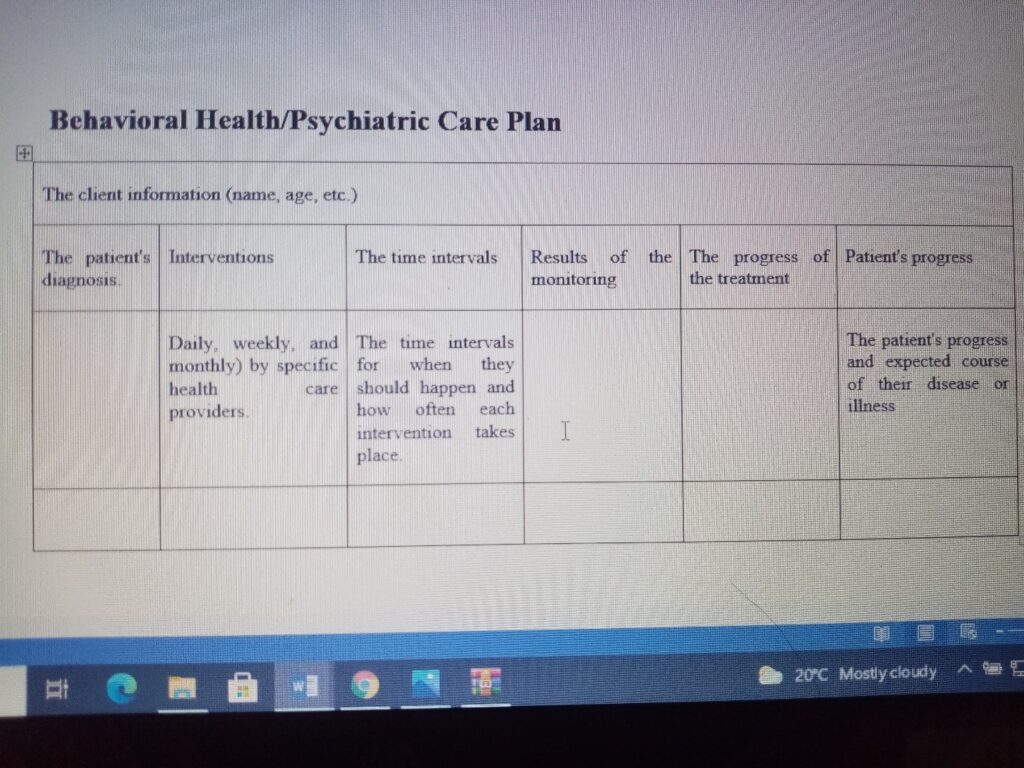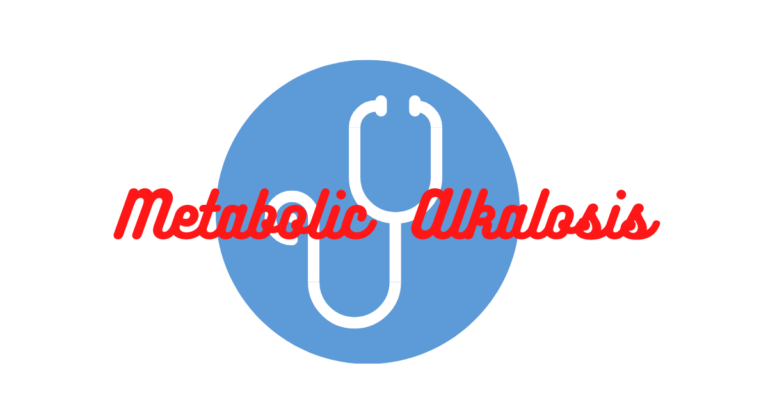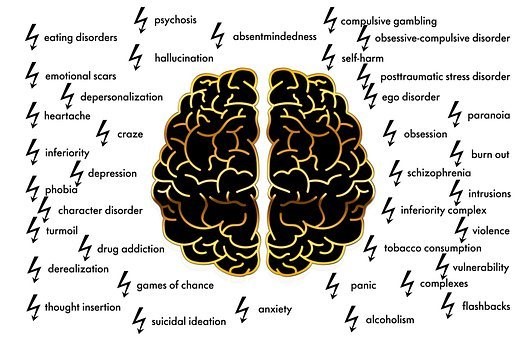Nursing Care Plan Examples- A Guide for Nursing Students
Introduction
Nursing care plans are an essential part of patient care. They provide a roadmap for healthcare providers to follow to ensure that patients receive the best possible treatment and healing environment. Nursing care plans can also be used as a guide for student nurses when they start their first job.
In this post, we have compiled examples of nursing care plans from different hospital settings to see how these documents are used in practice. This blog post will help you create your customized plan by providing examples from various situations: surgery, pediatrics, oncology, internal medicine, behavioral health/psychiatry. As you read, keep in mind that our top nursing writers are ready to assist if you get stuck with a nursing assignment. All you need to do is place an order with us!
Disclaimer: The information presented in this article is not medical advice; it is meant to act as a quick guide to nursing students, for learning purposes only, and should not be applied without an approved physician’s consent. Please consult a registered doctor in case you’re looking for medical advice.
What is a Nursing Care Plan?
A Nursing care plan is a highly detailed document that provides instructions for the nursing team to follow to meet an individual client’s needs best.
What Are the 4 Key Steps to Care Planning?
The four key steps to care planning are:
1. Identify the client’s needs
2. Determine any relevant factors that affect their care
3. Complete a full assessment of the problem/illness/condition
4. Make treatment decisions
What is the Classification of Nursing Care Plans?
1. Acute care – this short-term type of planning is used for clients who require highly specialized procedures to seek timely and effective treatment.
2. Long term – these plans cover more minor procedures that are performed over a longer period of time, such as IV infusions or wound care.
3. Home health – this type of planning is used to follow up with clients who have been discharged from the hospital but still need close monitoring and care. The above classification system can be used as a success guide for creating your own customized plan by using examples from different medical settings.


What Should Be Included in a Nursing Care Plan?
A nursing care plan document should include:
• The client information (name, age, diagnosis, etc.)
• Conditions and Circumstances (health status of the client)
• Assessment (measuring the severity of an illness/injury)
• Goals (specific desired outcomes for each situation)
• Interventions (types of treatments or specific actions for dealing with a person’s health)
• Evaluation and Management Plan (ways to measure progress and adjust accordingly)


Who Can Use a Nursing Care Plan?
A nursing care plan should be shared between members of the healthcare team at all levels. The document can also be helpful in various situations, such as when a patient is transferred between units or hospitals.
Nursing Care Plan Outline
When creating a nursing care plan, it is essential to make sure that they are well organized and easy to follow. To help with this process, we have created some general guidelines for just starting or looking for a bit of guidance on their own.


The following is an example of our nursing care plan outline that you can use as a reference and edit to your specific needs:
1) Headings/Subheadings
Under each heading should be the title of the prompt. If you are referencing other documents to use as a reference for your care plan, list those underneath each heading. Try to keep subheadings and titles as clear as possible so that the reader can understand what information they will find under them.
Under Upstream Interventions of the nursing care plan, try to make a note of the following:
-What are the anticipated downstream outcomes or patient goals?
-Which nursing interventions will be implemented? What time frame will they be completed by?
-Include evidence if possible for each intervention (nursing literature).
Under Nutrition Assessment & Implementation, include the following:
- Patient’s weight (include intervention if required),
- Body mass index (BMI) and other information used in nutritional assessments (hematocrit, albumin, total protein).
- Write about assessing the patient’s nutrition status (i.e., how much fluid does the client take daily? changes in skin/hair color?).
After this section, it would be good to include your goals for the patient under Nutrition Goals and then specific interventions under Nutrition Interventions.
2. Nursing Diagnoses
Under Nursing Diagnoses, include the following:
The diagnoses present and then list others that are suspected (using evidence for each one).
For more examples of nursing diagnoses, check our other article on Schizophrenia
Evaluation/Evaluation Data section
-Explain how the status of your nursing diagnoses have changed or remained stagnant based on your interventions,
-Include evidence of your interventions and outcomes.
3. Assessment/Assessment Data
Include the following:
-General assessment information (e.g., RASS, pain scale). –Ensure that you have documented a subjective and objective assessment for each nursing diagnosis or subheading in this section (use evidence to support data collection).
Evaluation section
-Explain how the status of your nursing diagnoses have changed or remained stagnant based on your interventions,
-Include evidence of your interventions and outcomes.


4. Nursing Interventions
-Write about specific treatments that you have been implementing for each diagnosis (include evidence).
Evaluation/Evaluation Data section
-Explain how the status of your nursing diagnoses have changed or remained stagnant based on your interventions.
-Include evidence of your interventions and outcomes.
The following are examples of nursing care plans from various medical settings.
Nursing Care Examples- OB/GYN Care Plan
Patient Identification
In this section, the care plan will include information on:
-Patient’s full name, date of birth, hospital number, and bed number.
-Reason for admission to this department or patient’s current location.
-Date and time of admission (which can be confirmed with the registration charts). Length of stay in case it is not their regular department or location.
-Name of person making the assessment (name and title). Date of assessment.
-Address for the patient – this is essential information that helps emergency services locate someone in case they are unable to communicate with you, as well as letting other people know where to find them (i.e., family members) if there is a problem or accident (i.e. if they have no memory of you).
-Healthcare providers and other health professionals involved in the assessment and care for that patient, along with their contact information.
-Identify the primary nurse caring for this client on a given shift.
-Under this section, you would include collected physiological data, such as oxygen saturation levels (SpO2), temperature, and respiratory rates. If blood pressure is recorded, it should be documented in specific values, for example, systolic (e.g., 110 mmHg) or diastolic (e.g., 55 mmHg), rather than just a generic “good, normal or elevated.”
Nursing Care Plan Examples- Behavioral Health/Psychiatric Care Plan
This type of care plan is designed for patients with mental health issues and their treatment. Their needs are different from other patients, as they have to be treated with empathy and understanding while also receiving an appropriate medical intervention. They also have to be constantly monitored by hospital staff because their illness can quickly become life-threatening.
The Behavioral Health/Psychiatric Care Plan include;
-The client information (name, age, diagnosis, etc.)
-Conditions and Circumstances (health status of the client)
-The patient’s diagnosis.
-Different interventions for the patient must be done regularly (daily, weekly, and monthly) by specific health care providers.
-The time intervals for when they should happen and how often each intervention takes place.
-The results of the monitoring to check if the treatment is working or not. The progress of the treatment.
-The patient’s progress and expected course of their disease or illness.


Nursing Care Examples-Pediatric Care Plan
These types of care plans are designed specifically for children and infants in hospital settings. They differ from adult care plans as they address the developmental needs of these patient groups. In addition, pediatric care plans also address cultural values and needs that vary from country to country.
A pediatric care plan includes;
-The client information (name, age, diagnosis, etc.)
-Conditions and Circumstances (health status of the client)
-The diagnosis of the illness or reason for hospitalization. In many cases, you need to include a list of different diagnoses (i.e., because in some cases, they can cause other illnesses later on).
-Interventions that should be implemented by specific health care providers for that patient group.
-The time intervals for when they should happen and how often each intervention takes place.
-The results of the monitoring to check if the treatment is working or not. The progress of the treatment.
-The patient’s progress and expected course of their disease or illness.
Special Considerations for Pediatric Nursing Care Plans:
• Include contact information for both parent(s) and guardian(s) – if applicable
• Include instructions for the care of other children – if applicable
• The nurses should communicate any information directly with parents and guardians in a clear, non-technical manner to ensure that they understand exactly what actions are being taken on their child’s behalf.
Nursing Care Examples-Maternity Nursing Care Plan
Maternity care plans are used to track the progress of a woman throughout her pregnancy. This includes;
-The client information (name, age, diagnosis, etc.)
-Conditions and Circumstances (health status of the client)
-Information regarding any complications that have occurred during the pregnancy,
-Vital signs monitoring and diet regimens
-Visit date of the physician(s)
-Labor and delivery information, including complications and/or abnormal occurrences during those stages. A variety of tests are conducted to monitor the progression of labor, such as:
-Uterine contractions recordings using external monitoring devices (to check that they are within normal limits)
-Blood pressure and pulse readings (to check for any signs of hypertension or irregular heartbeat)
-Fetal heart rate monitoring using an electronic device that records the baby’s heartbeat during contractions
-Amniotic fluid levels may be monitored using a test known as an amniotic fluid index. This is done by inserting a needle into the mother’s lower abdomen
-An ultrasound may also be used, although this method is typically reserved for later pregnancy due to increased safety concerns. An ultrasound is used to check that the fetus is developing correctly and growing as it should.
Asthma Attack Nursing Care Plan
An Asthma Attack Care Plan is used to determine the best course of action to take if an asthmatic patient has an asthma attack. It includes the following;
-The client information (name, age, diagnosis, etc.)
-Conditions and Circumstances (health status of the client)
-A list of what interventions should be done by all members of the health care team during an asthma attack, including first aid treatments as well as administering medications and providing treatments for more severe cases
-A description of how to handle different types of asthma attacks.
In particular, Asthma Attack Care Plans can include the following:
-What to do if multiple patients are present (as non-allergens can trigger asthma attacks)
-How to handle different age groups and patient severities, including what kind of interventions should be taken as a result.
For example, an Asthma Attack Plan for Infants should include instructions for handling a child who is experiencing an asthma attack, how much medication they should take, and what environmental factors need to be taken under consideration. This kind of plan can also guide parents in determining when it is time to visit the doctor or make phone calls regarding their child’s condition.
Heart Failure Nursing Care Plan
The nurses use this care plan to monitor and evaluate the patients suffering from heart failure. The care plan also helps them provide good nursing care to the patient with the help of other medical professionals.
It includes the following;
-The client information (name, age, diagnosis, etc.)
-Conditions and Circumstances (health status of the client)
-Vital parameters and other information to keep track of the patient’s health status
-List of medications to be given daily or as per the need
-Patients diet plan (food to be eaten regularly)
-Coughing, nausea, vomiting, deep vein thrombosis prevention and control of infection
Nursing Care Plan for Coronary Heart Disease
Caring for Patients with a history and/or risk of CHD
The following is a detailed nursing care plan:
Patient Name (ID#) Date: XX/XX/XXXX Time: XX AM-PM Reason for visit: Reassessment and Risk Factor Education Medication Change Patient History: CHD; Coronary Artery Disease (CAD); STEMI Initial Diagnosis: Acute MI; ST-Segment Elevation Myocardial Infarction Current Medications: Aspirin 162mg PO QD; Lopressor 50mcg XL SC twice daily (bid); Zocor 20mg PO BID Past Medical History Family History Social History Smoking Positive IV drug use eight years ago Recent Use of cocaine five months ago Complications Acute Renal failure from IV drug use; Septicemia Personal thoughts/Coping Understands disease process, medications, and management plans. Recognizes risk factors and uses lifestyle changes to minimize his risk for another MI. Has asked about returning to work in a limited capacity with the help of his occupational therapist (OT).
Assessment: Assess CBC, PT/PTT, Hepatic enzymes, UA, BUN/Creatinine; assess for edema if necessary. Check labs from the previous admission as well.
Activity: Patient can ambulate 2 flights of stairs with assistance as needed and is up to date on his health teaching from the previous admission. The patient was non-compliant with his prior discharge instructions and attempted to return to work in a very physically demanding job (construction), even while still on beta-blockers.
Mental Status: Oriented, denies pain/discomfort. Able to discuss assessment findings, diagnosis, risk factors, lifestyle changes, and medications.
Medications: Review list of current medications, verifying name, dosage, and frequency (this includes new beta-blockers). Patient’s Zocor dose was adjusted to prevent hyperlipidemia if the patient is started on the recommended statin. Exercise plan was provided to the patient that includes walking up and down stairs as tolerated and increased walking intervals as pain decreases. The patient has been instructed to limit his carbohydrate intake, especially in the evening. A 24-hour urine collection will be performed after discharge for further lipid level testing.
Stabilization/Discharge: Discharge Plan: Continue with current medications as prescribed; follow up in one week to assess overall progress.
Summary/Follow up: Patient has been taught about the importance of eating a heart-healthy diet and avoiding tobacco use, especially in his present condition. It is advised for follow-up labs to be drawn at least once per week until discharge to assess lipid levels and renal function; Labs were drawn during visit after discussion with the patient.
Follow up in one week to assess labs value and overall progress.
You may be interested in Nursing Diagnosis for Pancreatitis
Summary
In general, a patient care plan is used to outline the best course of action when dealing with a specific medical condition. It also lays out how nurses can handle different situations that might occur in conjunction with that particular condition.
Nursing care plans are generally more detailed than other types and describe each step of what should be done for patients depending on their individual needs.
Monitor care plans are written similarly but with more general information about the patient’s condition. These plans generally include information about how to monitor patients on a day-to-day basis, such as checking their vital signs and other general health parameters. It also guides how to report these results along with any further special instructions.
Lastly, we recommend that your check our other articles on nursing metaparadigms to expand your knowledge on the nursing philosophy, nursing leadership styles to better position yourself as a nursing leader, and our list of topics in nursing/psychology to make it easier to chose an appropriate topic for your upcoming essay/research paper/thesis.
Also, in case you prefer that our top writers handle the nursing assignment for you due to reasons such as a busy schedule or otherwise, then click the “Write my Nursing Assignment” button below and follow the simple steps. We wish you all the best!







